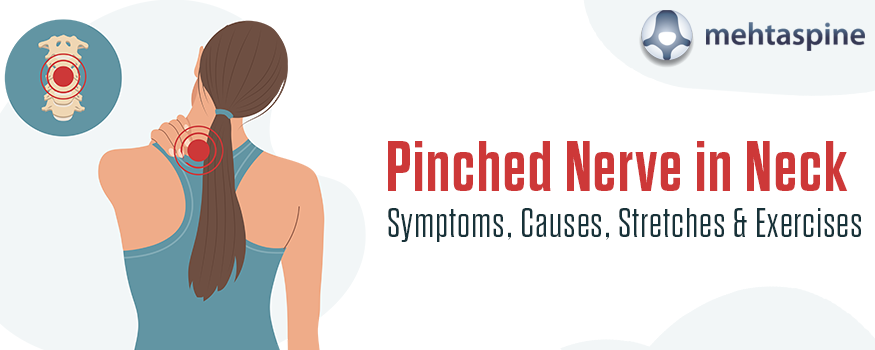Pinched Nerve in Neck: Symptoms and Causes
Cervical radiculopathy, another name for a pinched nerve in the neck, can be extremely painful and significantly restrict the range of motion. For people who are impacted by this illness, it is essential to comprehend its causes, symptoms, and practical management techniques.
Several things, such as bad posture, trauma, or degenerative changes to the spine, can cause pinched nerves in the neck. This thorough guide will examine the symptoms, the underlying reasons, and a variety of stretches and exercises and details on spine orthopedic surgeons that can help reduce discomfort and increase range of motion.
People can improve their overall quality of life and manage their condition more effectively by developing an understanding of these factors.
Understanding the Symptoms
A pinched nerve in the neck can present with a variety of symptoms, most often pain and limited mobility. Localized neck soreness that may extend to the hands, arms, or shoulders is a common complaint. Additionally, tingling or numbness may be felt in the afflicted regions.
A pins-and-needles feeling may coexist with muscle weakness and trouble grasping items. Sometimes people have more discomfort when they tilt their head or bend their neck, among other postures or actions. Comprehending and identifying these indications is crucial for an expeditious diagnosis and suitable management.
The Primary Causes
- Herniated Disc: A pinched nerve can result from a herniated disc in the cervical spine compressing surrounding nerves.
- Bone Spurs: As a result of osteoarthritis, bone spurs can gradually enlarge and compress the area around nerves.
- Spinal Stenosis: This condition is characterized by a narrowing of the spinal canal, which presses against the spinal nerves and produces pinched nerve symptoms.
- Poor Posture: Prolonged periods of poor posture, such as slouching or craning the neck, can strain neck muscles and compress nerves.
- Injury: Pinched nerve symptoms and nerve compression can be brought on by injuries or accidents involving the neck.
Stretches and Exercises
- Neck Stretch: Tilt your head gently to one side and keep it there for 15 to 30 seconds, or until you feel a stretch on the other side of your neck. Continue on the opposite side.
- Chin Tucks: Take a seat or stand upright, tuck your chin softly into your chest, keep it there for a little while, and then release it. This stretch aids in releasing tension in the upper back and neck.
- Shoulder Blade Squeeze: Squeeze your shoulder blades together as though you’re attempting to hold a pencil between them while sitting or standing with your arms at your sides. Hold for a short while before letting go. The muscles that support the shoulders and neck are strengthened by this workout.
- Upper Trapezius Stretch: To increase the stretch along the neck and shoulder, gently tilt your head to one side and then gently press with your palm on the other side of the head. After holding for 15 to 30 seconds, switch to the other side and repeat.
A better quality of life and successful treatment depend on an awareness of the signs, causes, and management strategies for a pinched nerve in the neck. Correcting spinal deformities and treating various spinal problems are the areas of expertise of consultant pediatric and adult spinal surgeon Mr. Jwalant Mehta.
With his experience, patients may receive thorough care and individualized attention for their spinal problems, which may result in improved results and pain alleviation.


